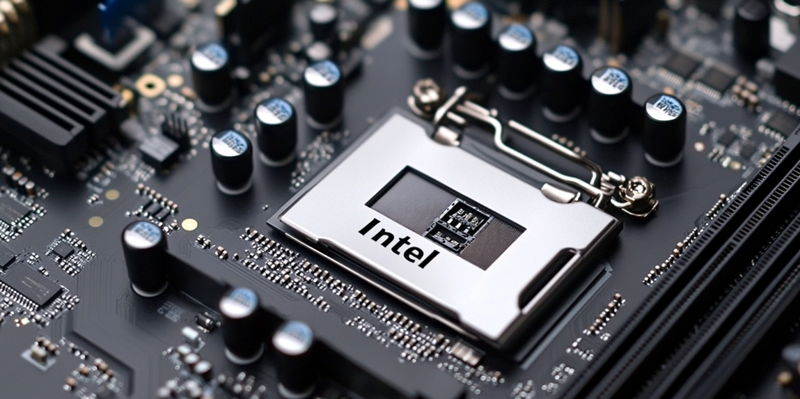In the ever-evolving landscape of GPU technology, Intel has unveiled XeSS 2, a groundbreaking iteration of its upscaling technology designed to compete head-to-head with Nvidia’s DLSS and AMD’s FSR. Marking a significant milestone in Intel’s GPU performance strategy, the update promises enhanced visuals and smoother gameplay experiences. The latest technology introduces several advancements split into distinct components focusing on frame generation and super resolution, reshaping the gaming world.
Enhancements Driving GPU Performance
XeSS Frame Generation and Super Resolution
Intel’s XeSS 2 is divided into two core components: XeSS Frame Generation and XeSS Super Resolution. The XeSS Frame Generation leverages Intel’s proprietary XMX AI Engines to insert artificially generated frames into games, significantly increasing frame rates and enhancing game smoothness. This component aims to provide a more immersive gaming experience by rendering additional frames without overburdening the GPU.
On the other hand, XeSS Super Resolution is tasked with upscaling lower-resolution images to higher resolutions, resulting in superior visual quality while maintaining optimal hardware performance. This upscaling technology enables gamers to enjoy high-resolution visuals without the need for excessively powerful GPUs. By focusing on efficient resource utilization, XeSS Super Resolution ensures that even gamers with older hardware can benefit from enhanced visual fidelity.
Reducing Input Lag with Xe Low Latency
Alongside the frame generation and super resolution components, Intel addresses the often-discussed issue of input lag through their Xe Low Latency technology. Comparable to Nvidia Reflex, Xe Low Latency focuses on minimizing the latency introduced by frame generation. This ensures that gameplay remains responsive and fluid, maintaining the integrity of the gaming experience.
Reducing input lag is paramount for competitive gaming, where split-second reaction times can mean the difference between victory and defeat. By integrating Xe Low Latency, Intel aims to offer gamers a responsive and seamless experience, free from the detrimental effects of lag. This advancement showcases Intel’s dedication to refining the gaming experience through technological innovation.
Hardware and Software Integration
Exclusive Support for Intel GPUs
A notable departure from the original XeSS technology is the exclusive support of XeSS 2 for Intel’s Alchemist and newly unveiled Battlemage GPUs. Unlike its predecessor, which extended compatibility to select AMD and Nvidia GPUs, XeSS 2 is tailored specifically for Intel hardware. This exclusivity allows Intel to optimize the upscaling technology for maximum performance on their GPUs.
Game developers will need to integrate support for these new technologies, including frame generation and low latency, into their games. This collaborative effort between Intel and game developers is crucial for ensuring that the advancements in XeSS 2 translate into tangible benefits for gamers. By focusing on a targeted range of hardware, Intel aims to deliver a cohesive and optimized gaming experience.
Revamped Control Panel: Intel Graphics Software
To complement the advancements in XeSS 2, Intel has launched a revamped control panel for its Arc GPUs, named Intel Graphics Software. This comprehensive interface serves as a centralized hub for managing various GPU settings, ranging from driver updates and game optimizations to performance monitoring and overclocking. The intuitive design and robust feature set of Intel Graphics Software empower users to fine-tune their GPU performance according to their preferences.
The control panel not only simplifies the management of GPU settings but also enhances the overall user experience by providing easy access to critical updates and optimizations. As gaming technology continues to evolve, having a centralized interface for managing GPU settings becomes increasingly important. Intel Graphics Software stands as a testament to Intel’s commitment to user-centric design and continuous innovation.
Competitive Edge and Industry Trends
Inclusive Strategies and Upscaling Technologies
Intel’s decision to enable frame generation even on older Alchemist GPUs contrasts sharply with Nvidia’s approach of restricting DLSS 3’s frame generation to the latest RTX 4000 series. This inclusive strategy demonstrates Intel’s intent to offer advanced features to a broader audience, enhancing its competitive edge in the market. By catering to both new and existing users, Intel aims to build a loyal user base that can benefit from the latest advancements in GPU technology.
The progression towards upscaling in gaming is becoming increasingly evident, with Intel’s timely enhancements ensuring they remain relevant in this dynamic landscape. Upscaling technologies are vital for delivering smooth frame rates at high resolutions like 4K, and their importance is not confined to PCs alone. Gaming consoles, such as the PlayStation Pro 5 with its PSSR, also emphasize the significance of upscaling technologies. Furthermore, Microsoft’s ongoing development of DirectSR aims to streamline the integration of upscaling technologies like XeSS, DLSS, and FSR into games, underscoring the growing relevance of these innovations.
The Future of GPU Technology
In the ever-changing realm of GPU technology, Intel has introduced XeSS 2, a cutting-edge update to its upscaling technology, poised to rival Nvidia’s DLSS and AMD’s FSR. This marks a pivotal advancement in Intel’s GPU performance roadmap, promising gamers improved visual fidelity and smoother gameplay. The newly unveiled technology brings a suite of enhancements categorized into two main segments: frame generation and super resolution. These advancements are set to revolutionize the gaming experience by delivering sharper images and more fluid motion.
With XeSS 2, Intel aims to deliver unprecedented performance and eye-catching visuals, utilizing innovative algorithms and machine learning techniques. This leap forward underlines Intel’s commitment to pushing the boundaries of what’s possible in gaming graphics. Gamers can expect a significant uplift in the quality of their gaming sessions, with techniques that not only boost frame rates but also ensure that the visuals remain crisp and detailed. This move is seen as Intel’s strategic effort to establish itself as a formidable player in the GPU market, providing competitive alternatives to Nvidia and AMD’s offerings.

